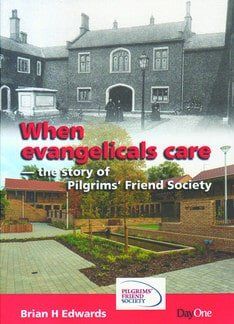Social care for the elderly is a much discussed issue and this publication is timely. It is the account of how a group of young Christians, concerned for the suffering of aged believers, became the wide-ranging Pilgrims’ Friend Society. It serves to correct any notion that evangelicals are too ‘spiritual’ to be concerned for the needs of the body.
The early chapters are fascinating, giving a vivid description of the horrendous conditions that prevailed in the cities caught up in the industrial revolution of the eighteenth century.
A group of young Christian believers were moved by the plight of elderly Christian widows and met together in August 1807 to prayerfully consider what might be done to ease their suffering. So began the Aged Pilgrims’ Friend Society.
The members resolved to make pension payments to these needy folk — 100 years before this country introduced the Old Age Pension! The payments were made in person; each recipient also received a monthly pastoral visit. The project was financed by eliciting subscriptions, also collected by hand. A considerable amount of time and effort was given to the work.
Two things are worthy of note. First, this was an initiative of young people. Today’s supporters have cause for concern at the apparent lack of interest in this ministry among the young. Second, this project was very much a lay ministry.
Those early pioneers received little encouragement and, indeed, some opposition from church leaders. Thankfully, by the 1830s, the project was taken up enthusiastically by a number of ministers.
The story goes on to record the move towards residential homes, Camberwell being the first venue, followed by Hornsey Rise. The Society’s auxiliaries came into existence — believers from the churches who became involved in fund-raising and pastoral visiting.
Today, the Society has evolved into the Pilgrims’ Friend Society. It now runs 15 homes, both residential and nursing. A new construction in Mirfield, West Yorkshire, and a redevelopment at Evington, Leicester, offer independent living.
The challenges today are immense, following increasingly complex government legislation and the rising incidence of dementia. The Society continues to meet the needs of elderly Christians and deserves widespread support, practically and through prayer.
This highly recommended book ends with the important comment that aged believers are not just to be cared for, but are a valuable asset to any church.
John Harris
Thornhill




